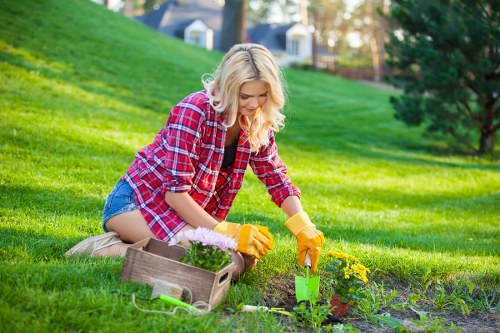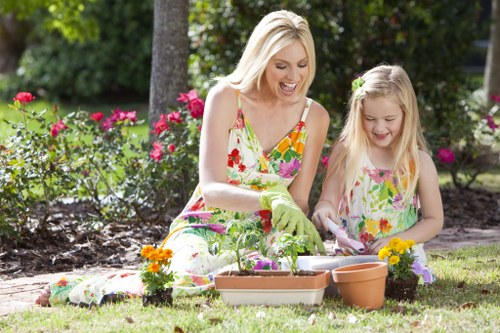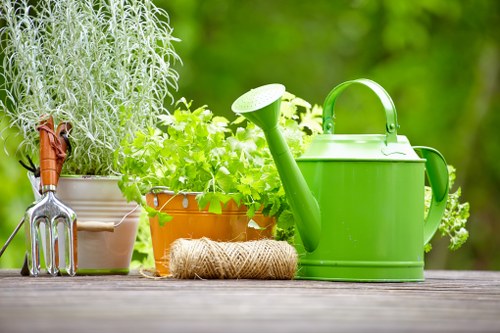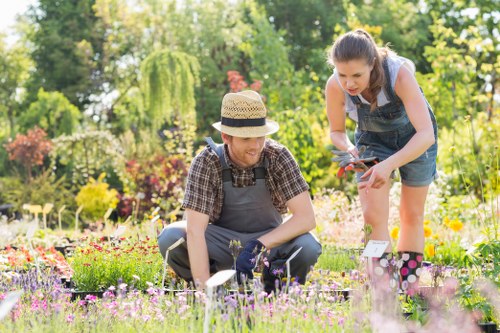Gardening in Mount Hawthorn: Cultivating Green Spaces in a Vibrant Community
Introduction to Gardening in Mount Hawthorn

Mount Hawthorn, a charming suburb known for its vibrant community and lush landscapes, offers a perfect environment for gardening enthusiasts. Whether you're a seasoned gardener or a beginner, Mount Hawthorn provides the ideal climate and soil conditions to nurture a variety of plants.
The area's diverse flora and fauna make it an excellent location for cultivating gardens that not only enhance the beauty of your home but also contribute to the local ecosystem. From colorful flower beds to sustainable vegetable gardens, the possibilities are endless.
In this article, we'll explore the best gardening practices in Mount Hawthorn, the types of plants that thrive here, and tips for maintaining a healthy and beautiful garden throughout the year.
Understanding the Climate of Mount Hawthorn

Mount Hawthorn enjoys a temperate climate with distinct seasons, which plays a crucial role in gardening. The mild winters and warm summers provide a conducive environment for a wide range of plants.
Rainfall is fairly consistent throughout the year, reducing the need for extensive irrigation systems. However, understanding the specific weather patterns can help gardeners plan their planting schedules more effectively.
Additionally, the area's microclimates, influenced by its elevation and proximity to parks, offer unique opportunities for growing both native and exotic plant species.
Soil Composition and Preparation

The soil in Mount Hawthorn is generally fertile, with a good balance of sand, silt, and clay. However, it's essential to conduct a soil test to determine its specific composition and pH levels before starting your garden.
Adding organic matter such as compost or well-rotted manure can improve soil structure, enhance nutrient content, and promote healthy root development. Regular soil maintenance ensures that your plants receive the necessary nutrients to thrive.
For those interested in sustainable gardening, practices like crop rotation and mulching can further enhance soil health and reduce the need for chemical fertilizers.
Choosing the Right Plants for Mount Hawthorn Gardens

Flowering Plants
Mount Hawthorn's climate supports a variety of flowering plants that add color and vibrancy to any garden. Popular choices include roses, lavender, and dahlias, which are known for their resilience and beauty.
Vegetable and Herb Gardens
For those interested in growing their own food, Mount Hawthorn is ideal for vegetable and herb gardens. Tomatoes, basil, and kale are among the favorites, offering both flavor and nutrition.
Native Plants
Incorporating native plants like eucalyptus and bottlebrush not only supports local wildlife but also ensures that your garden is well-suited to the local environment, requiring less maintenance and water.
Garden Design and Layout

Planning Your Space
Effective garden design begins with careful planning. Consider the layout of your garden space, taking into account factors like sunlight exposure, soil quality, and drainage patterns.
Creating Focal Points
Incorporating elements such as sculptures, water features, or a dedicated seating area can create focal points that enhance the aesthetic appeal of your garden.
Pathways and Borders
Defining pathways and borders not only adds structure to your garden but also makes it easier to navigate and maintain. Materials like gravel, stone, or wood can be used to create visually appealing and functional pathways.
Seasonal Gardening Tips

Gardening in Mount Hawthorn requires attention to the changing seasons. Here's how to adapt your gardening practices throughout the year:
- Spring: Begin planting early-season vegetables and prepare flower beds with mulch and compost.
- Summer: Focus on watering, weeding, and harvesting crops. Provide shade to delicate plants if necessary.
- Autumn: Plant bulbs for spring blooms and prepare your garden for the cooler months by clearing debris.
- Winter: Protect sensitive plants with covers and plan next year's garden layout.
Pest and Disease Management
Maintaining a healthy garden involves proactive pest and disease management. Regularly inspect your plants for signs of infestation or illness, and take appropriate measures to address issues promptly.
Organic solutions, such as neem oil or insecticidal soaps, are effective against many common pests and are environmentally friendly options.
Encouraging beneficial insects like ladybugs and praying mantises can also help keep pest populations in check.
Watering and Irrigation Techniques
Efficient watering practices are essential for a thriving garden. Drip irrigation systems are highly recommended in Mount Hawthorn as they conserve water and deliver it directly to the plant roots.
Mulching around your plants can help retain moisture, reduce evaporation, and regulate soil temperature, ensuring that your garden remains hydrated even during dry spells.
It's best to water your garden in the early morning to minimize water loss and reduce the risk of fungal diseases.
Organic Gardening Practices
Embracing organic gardening not only benefits your health but also the environment. Avoiding synthetic chemicals and fertilizers helps maintain soil integrity and promotes biodiversity.
Composting kitchen scraps and garden waste provides a natural fertilizer rich in nutrients, enhancing plant growth and soil fertility.
Using natural pest repellents and companion planting can effectively manage garden pests without harming beneficial insects.
Gardening Tools and Equipment
Having the right tools is essential for efficient gardening. Invest in quality tools such as spades, pruners, and watering cans to make your gardening tasks easier.
Proper maintenance of your tools, including regular cleaning and sharpening, ensures their longevity and effectiveness.
Consider using ergonomic tools to reduce strain and improve comfort during prolonged gardening sessions.
Local Gardening Resources in Mount Hawthorn
Mount Hawthorn offers a variety of local resources to support gardeners. From community gardens to local nurseries, these resources provide valuable information and materials for your gardening projects.
Participating in local gardening clubs or workshops can enhance your skills and connect you with fellow gardening enthusiasts.
Additionally, local extension services often offer free advice and soil testing services to help you achieve the best results in your garden.
Nearby Areas to Mount Hawthorn for Gardening Services
Gardening services are readily available not only in Mount Hawthorn but also in the surrounding areas, each offering unique features:
- Camberwell: Located just south of Mount Hawthorn, Camberwell boasts several nurseries and garden centers.
- Hawthorn East: Known for its community gardens and landscaping services.
- Yarraville: Offers a blend of traditional and modern gardening techniques.
- East Melbourne: Features upscale gardening services and premium plant selections.
- Fitzroy: Renowned for its eco-friendly and sustainable gardening practices.
- Richmond: Provides a wide range of gardening supplies and expert advice.
- Brunswick: Known for its vibrant plant markets and community workshops.
- Kew: Offers specialized gardening services tailored to local climates.
- Northcote: Features innovative gardening solutions and design services.
- Glen Iris: Provides comprehensive landscaping and garden maintenance services.
- Ivanhoe: Known for its extensive selection of native plants and trees.
- Preston: Offers affordable gardening options and bulk plant purchases.
- Albert Park: Renowned for its ornamental gardens and decorative landscaping.
- Camberwell East: Features exclusive gardening clubs and premium services.
- Moonee Ponds: Known for its community-driven gardening projects and initiatives.
Maintaining Your Mount Hawthorn Garden
Regular maintenance is key to ensuring the longevity and beauty of your garden. This includes tasks such as pruning, weeding, and monitoring plant health.
Implementing a maintenance schedule helps keep your garden organized and prevents tasks from becoming overwhelming.
Seasonal check-ups allow you to address specific needs based on the time of year, ensuring your garden remains vibrant and healthy throughout all seasons.
Sustainable Gardening Practices
Sustainability in gardening not only benefits the environment but also enhances the resilience of your garden. Incorporate practices such as rainwater harvesting, composting, and the use of native plants to create a sustainable garden.
Reducing waste and conserving resources contribute to a healthier planet while ensuring your garden thrives with minimal environmental impact.
Consider integrating permaculture principles to design a garden that is both productive and self-sustaining.
Advanced Gardening Techniques
For those looking to take their gardening skills to the next level, Mount Hawthorn offers several advanced techniques:
- Hydroponics: Growing plants without soil, using nutrient-rich water solutions.
- Vertical Gardening: Maximizing space by growing plants vertically on structures or walls.
- Greenhouse Gardening: Providing controlled environments for year-round cultivation.
- Grafting: Combining the best qualities of different plant varieties to create superior specimens.
Community and Social Aspects of Gardening
Gardening in Mount Hawthorn is not just a solitary activity; it fosters community engagement and social interaction. Participating in community gardens or local gardening events can build strong social ties and promote collective environmental stewardship.
Sharing knowledge, seeds, and resources within the community enhances everyone's gardening experience and contributes to a more sustainable neighborhood.
Additionally, community-driven projects can beautify public spaces and create a sense of pride among residents.
Call to Action
Ready to transform your outdoor space? Contact us today to start your gardening journey in Mount Hawthorn. Whether you're looking for expert advice, quality plants, or comprehensive gardening services, we're here to help you cultivate the garden of your dreams.
